Baozhou Zhu
AutoReCon: Neural Architecture Search-based Reconstruction for Data-free Compression
May 25, 2021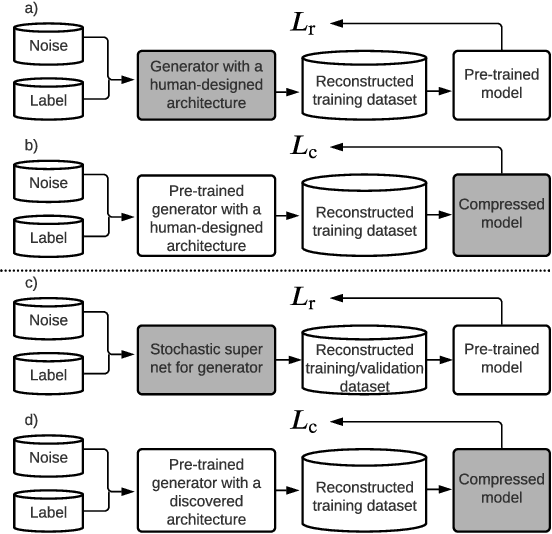
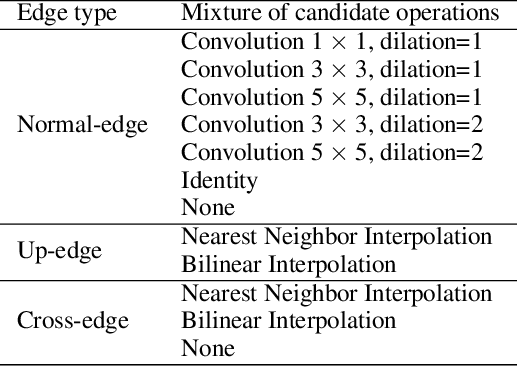

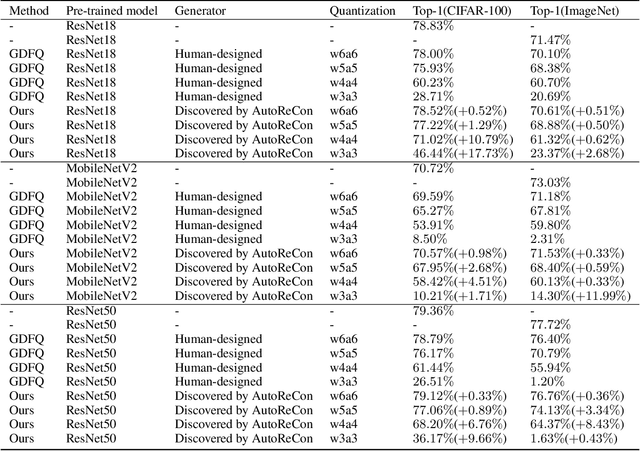
Abstract:Data-free compression raises a new challenge because the original training dataset for a pre-trained model to be compressed is not available due to privacy or transmission issues. Thus, a common approach is to compute a reconstructed training dataset before compression. The current reconstruction methods compute the reconstructed training dataset with a generator by exploiting information from the pre-trained model. However, current reconstruction methods focus on extracting more information from the pre-trained model but do not leverage network engineering. This work is the first to consider network engineering as an approach to design the reconstruction method. Specifically, we propose the AutoReCon method, which is a neural architecture search-based reconstruction method. In the proposed AutoReCon method, the generator architecture is designed automatically given the pre-trained model for reconstruction. Experimental results show that using generators discovered by the AutoRecon method always improve the performance of data-free compression.
Towards Lossless Binary Convolutional Neural Networks Using Piecewise Approximation
Aug 29, 2020



Abstract:Binary Convolutional Neural Networks (CNNs) can significantly reduce the number of arithmetic operations and the size of memory storage, which makes the deployment of CNNs on mobile or embedded systems more promising. However, the accuracy degradation of single and multiple binary CNNs is unacceptable for modern architectures and large scale datasets like ImageNet. In this paper, we proposed a Piecewise Approximation (PA) scheme for multiple binary CNNs which lessens accuracy loss by approximating full precision weights and activations efficiently and maintains parallelism of bitwise operations to guarantee efficiency. Unlike previous approaches, the proposed PA scheme segments piece-wisely the full precision weights and activations, and approximates each piece with a scaling coefficient. Our implementation on ResNet with different depths on ImageNet can reduce both Top-1 and Top-5 classification accuracy gap compared with full precision to approximately 1.0%. Benefited from the binarization of the downsampling layer, our proposed PA-ResNet50 requires less memory usage and two times Flops than single binary CNNs with 4 weights and 5 activations bases. The PA scheme can also generalize to other architectures like DenseNet and MobileNet with similar approximation power as ResNet which is promising for other tasks using binary convolutions. The code and pretrained models will be publicly available.
NASB: Neural Architecture Search for Binary Convolutional Neural Networks
Aug 08, 2020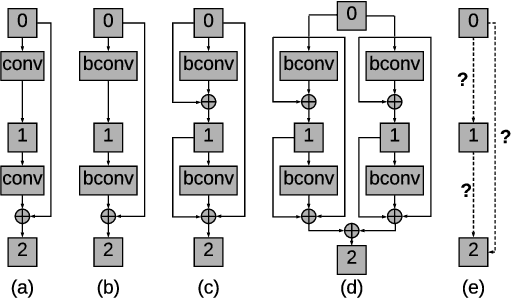
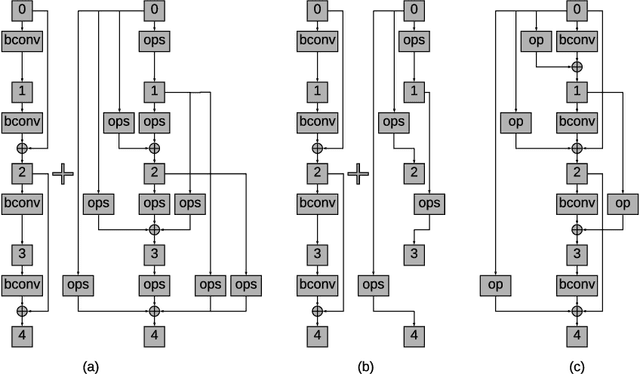

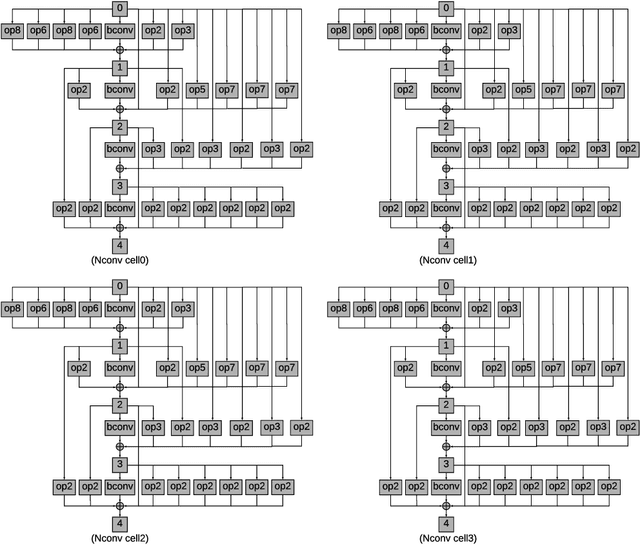
Abstract:Binary Convolutional Neural Networks (CNNs) have significantly reduced the number of arithmetic operations and the size of memory storage needed for CNNs, which makes their deployment on mobile and embedded systems more feasible. However, the CNN architecture after binarizing requires to be redesigned and refined significantly due to two reasons: 1. the large accumulation error of binarization in the forward propagation, and 2. the severe gradient mismatch problem of binarization in the backward propagation. Even though the substantial effort has been invested in designing architectures for single and multiple binary CNNs, it is still difficult to find an optimal architecture for binary CNNs. In this paper, we propose a strategy, named NASB, which adopts Neural Architecture Search (NAS) to find an optimal architecture for the binarization of CNNs. Due to the flexibility of this automated strategy, the obtained architecture is not only suitable for binarization but also has low overhead, achieving a better trade-off between the accuracy and computational complexity of hand-optimized binary CNNs. The implementation of NASB strategy is evaluated on the ImageNet dataset and demonstrated as a better solution compared to existing quantized CNNs. With the insignificant overhead increase, NASB outperforms existing single and multiple binary CNNs by up to 4.0% and 1.0% Top-1 accuracy respectively, bringing them closer to the precision of their full precision counterpart. The code and pretrained models will be publicly available.
 Add to Chrome
Add to Chrome Add to Firefox
Add to Firefox Add to Edge
Add to Edge